
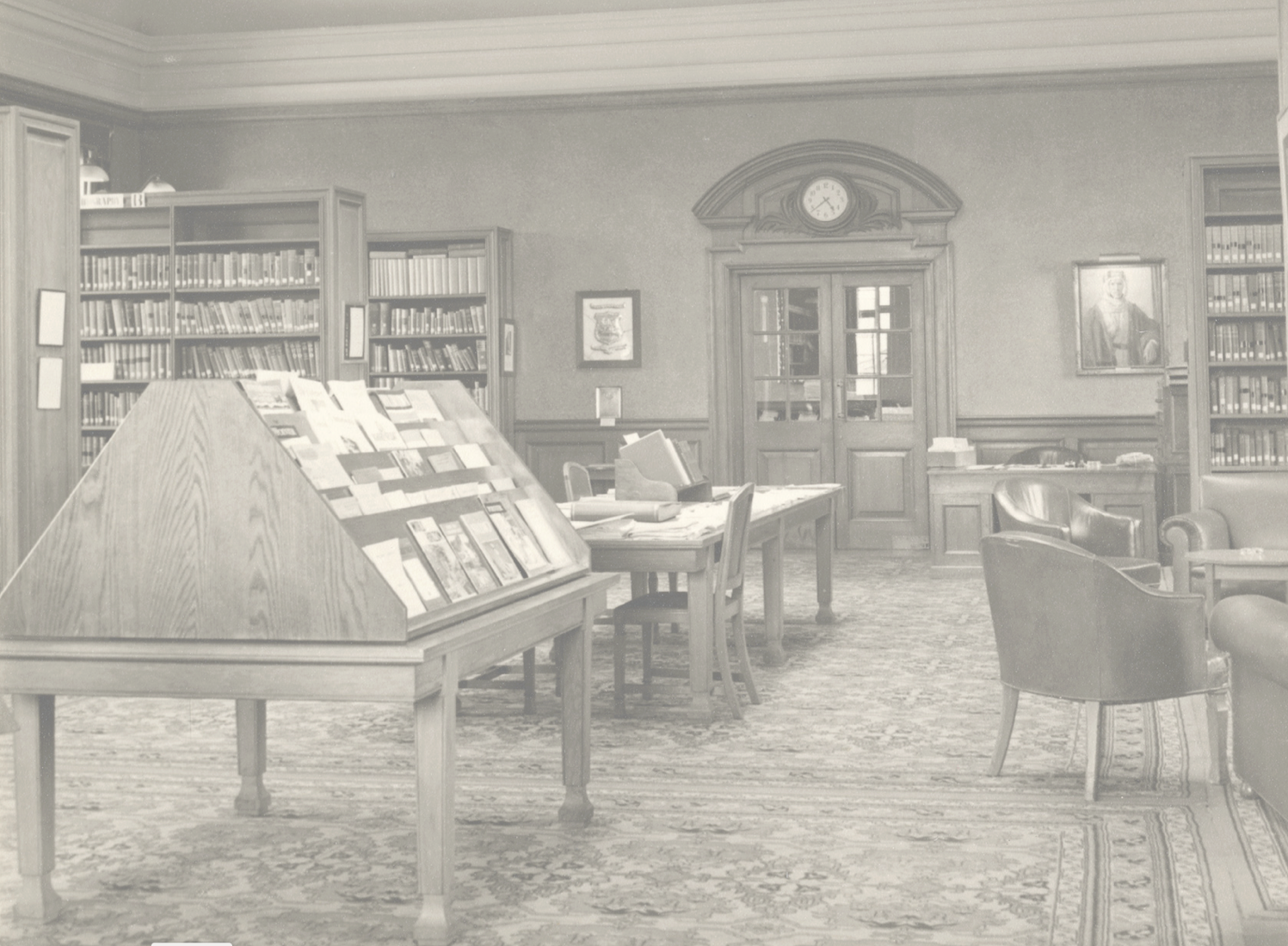
RAF College Cranwell Virtual Library

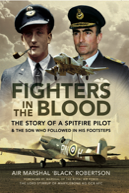


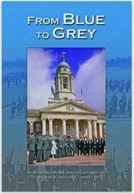
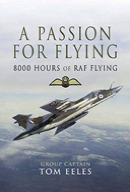

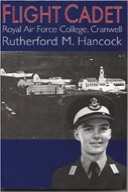
Books by, or about, Old Cranwellians are available through regular book sellers or ebay.

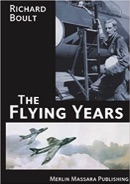
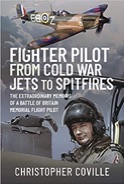

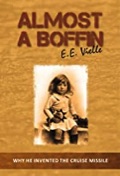
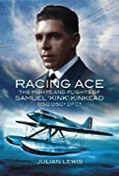
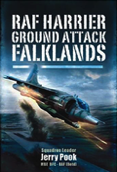

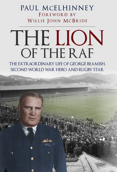
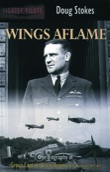


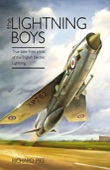
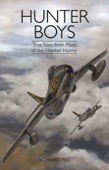
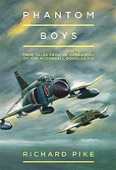
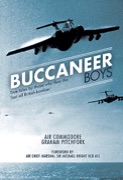



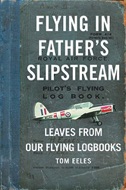
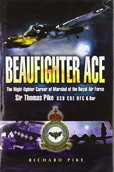

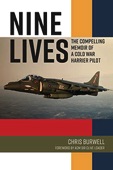

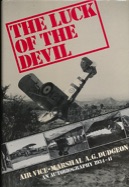

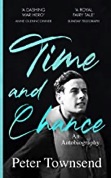
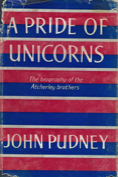
BUCCANEER BOYS
Twenty-four aircrew who flew the iconic aircraft with the Fleet Air Arm, the Royal Air Force and the South African Air Force (SAAF) relate their experiences and affection for the Blackburn Buccaneer. Arranged in chronological order, the book traces the history of the aircraft and the tasks it fulfilled. In addition to describing events and activities, it provides an insight into the lifestyle of a Buccaneer squadron and the fun and enjoyment of being a 'Buccaneer Boy' in addition to being part of a highly professional and dedicated force. The introduction into service is fully described before further chapters cover the development of the air force's maritime tactics and the deployment of two squadrons to Germany in the overland strike role. Two chapters cover the aircraft's stunning successes at the Red Flag and Maple Flag exercises flown in North America which took the USAF hierarchy by storm. A further chapter is devoted to the intensive but little known Bush War operations by 24 SAAF Squadron on the borders of Angola. Two USAF exchange officers who flew Buccaneers relate their experiences and the aircraft's deployment for the Lebanon crisis and the reinforcement exercise to the Falkland Islands is examined. The introduction of new air-to-surface anti-ship missiles is covered before the Buccaneer left to go to war in the Gulf where it distinguished itself providing precision laser marking for the Tornado force in addition to carrying out its own precision bombing attacks. This lavishly-illustrated book concludes with accounts of the aircraft's final days in RAF service and some reflections on its impact on maritime and overland air power.
Twenty-four aircrew who flew the iconic aircraft with the Fleet Air Arm, the Royal Air Force and the South African Air Force (SAAF) relate their experiences and affection for the Blackburn Buccaneer. Arranged in chronological order, the book traces the history of the aircraft and the tasks it fulfilled. In addition to describing events and activities, it provides an insight into the lifestyle of a Buccaneer squadron and the fun and enjoyment of being a 'Buccaneer Boy' in addition to being part of a highly professional and dedicated force. The introduction into service is fully described before further chapters cover the development of the air force's maritime tactics and the deployment of two squadrons to Germany in the overland strike role. Two chapters cover the aircraft's stunning successes at the Red Flag and Maple Flag exercises flown in North America which took the USAF hierarchy by storm. A further chapter is devoted to the intensive but little known Bush War operations by 24 SAAF Squadron on the borders of Angola. Two USAF exchange officers who flew Buccaneers relate their experiences and the aircraft's deployment for the Lebanon crisis and the reinforcement exercise to the Falkland Islands is examined. The introduction of new air-to-surface anti-ship missiles is covered before the Buccaneer left to go to war in the Gulf where it distinguished itself providing precision laser marking for the Tornado force in addition to carrying out its own precision bombing attacks. This lavishly-illustrated book concludes with accounts of the aircraft's final days in RAF service and some reflections on its impact on maritime and overland air power.

VULCAN BOYS
The Vulcan, the second of the three V bombers built to guard the United Kingdom during the Cold War, has become an aviation icon like the Spitfire, its delta shape as instantly recognizable as the howling noise it makes when the engines are opened for takeoff.
Vulcan Boys is the first book about this bomber recounted completely firsthand by the operators themselves. It tells the story of the aircraft from its design conception through the Cold War, when it played out its most important job as Britain’s nuclear deterrent; it also reveals the significant role its bombs and missiles played in liberating the Falkland Islands, for which it gained much celebrity.
These individual accounts detail how hours at a time were spent waiting to be scrambled to defend the country in the event of a third world war, and how pilots’ aggressive skills were honed by carrying out Lone Ranger sorties flying to the United States and westward around the world, and taking part in Giant Voice and Red Flag, competitive exercises against the US Strategic Air Command. The attacks in the Falklands using Shrike missiles are described accurately and in great detail for the first time, including the landing at Rio de Janeiro alongside a vivid account of Black Buck 2.
Vulcan Boys is a fascinating and completely authentic read reminding us of the Cold War, how it was fought, and the considerable effort required to prevent all-out nuclear war.
Contributions from
Jeremy Price 76B
Rod Bencke (80A)
Nigel Baldwin (81A)
Mike Horton (91B)
John Reeve (93D)
The Vulcan, the second of the three V bombers built to guard the United Kingdom during the Cold War, has become an aviation icon like the Spitfire, its delta shape as instantly recognizable as the howling noise it makes when the engines are opened for takeoff.
Vulcan Boys is the first book about this bomber recounted completely firsthand by the operators themselves. It tells the story of the aircraft from its design conception through the Cold War, when it played out its most important job as Britain’s nuclear deterrent; it also reveals the significant role its bombs and missiles played in liberating the Falkland Islands, for which it gained much celebrity.
These individual accounts detail how hours at a time were spent waiting to be scrambled to defend the country in the event of a third world war, and how pilots’ aggressive skills were honed by carrying out Lone Ranger sorties flying to the United States and westward around the world, and taking part in Giant Voice and Red Flag, competitive exercises against the US Strategic Air Command. The attacks in the Falklands using Shrike missiles are described accurately and in great detail for the first time, including the landing at Rio de Janeiro alongside a vivid account of Black Buck 2.
Vulcan Boys is a fascinating and completely authentic read reminding us of the Cold War, how it was fought, and the considerable effort required to prevent all-out nuclear war.
Contributions from
Jeremy Price 76B
Rod Bencke (80A)
Nigel Baldwin (81A)
Mike Horton (91B)
John Reeve (93D)

LIGHTNING BOYS
According to a recent international study, the Lightning is the fifth most popular military aircraft of all time. With over twenty individual stories from former Lightning pilots, this book relates the highs and lows, the dramas and the demands of those who operated this iconic aircraft until its sharp end.
Tales include the recollections of an aerobatic display pilot, an implausible yet true account of telepathic communication, and an extraordinary episode in which a Lightning pilot on an exchange program with the French Air Force became embroiled in a mid-air collision. An unverified, but likely genuine, world record is also revealed in one of the chapters.
In addition to the original photographs that accompany the text, the renowned aviation artist Chris Stone, a former Lightning pilot himself, has provided a unique sketch as well as copies of some of his paintings, offering a look at this amazing aircraft that will appeal to the general reader as well as the enthusiast.
Contributions from
Bill Wratten 78(D)
Clive Mitchell 85(C)
Richard Pike (85)
According to a recent international study, the Lightning is the fifth most popular military aircraft of all time. With over twenty individual stories from former Lightning pilots, this book relates the highs and lows, the dramas and the demands of those who operated this iconic aircraft until its sharp end.
Tales include the recollections of an aerobatic display pilot, an implausible yet true account of telepathic communication, and an extraordinary episode in which a Lightning pilot on an exchange program with the French Air Force became embroiled in a mid-air collision. An unverified, but likely genuine, world record is also revealed in one of the chapters.
In addition to the original photographs that accompany the text, the renowned aviation artist Chris Stone, a former Lightning pilot himself, has provided a unique sketch as well as copies of some of his paintings, offering a look at this amazing aircraft that will appeal to the general reader as well as the enthusiast.
Contributions from
Bill Wratten 78(D)
Clive Mitchell 85(C)
Richard Pike (85)

A PASSION FOR FLYING
Group Captain Tom Eeles served in the RAF for 44 years and totaled over 8000 hours of flying in twenty-eight different aircraft types. Tom entered RAF College Cranwell in 1961, he gained his RAF wings in 1963. His first posting was to No 16 squadron flying the Canberra. Its role as a light bomber squadron was primarily nuclear strike, with a secondary role of conventional ground attack by day and night. 16 Squadron was deployed Kuantan, Malaya. In July 1966 and on loan to the Senior Service, Tom reported to RNAS Lossiemouth for a swept wing conversion course on the Hunter before starting the Buccaneer Operational Flying Course. After 65 hours in the Buccaneer he was posted to 801 NAS, HMS Victorious.In 1969 he joined 736 Naval Air Squadron which was responsible for training courses for RAF aircrew converting to the Buccaneer. He moved to 12 Squadron based at RAF Honington. Their task was to provide a maritime strike/attack capability and a nuclear strike capability in support of the UK National Plan. 1975 saw a move to 79 Squadron flying the Hunter. After a spell at the RAF Staff College, Tom became staff officer responsible for all aspects of fast jet advanced flying training on the Hawk at Valley and multi engine advanced flying training at Finningley. In 1983, selected to command 237 OCU, again flying the Buccaneer at Lossiemouth..
Look inside
Group Captain Tom Eeles served in the RAF for 44 years and totaled over 8000 hours of flying in twenty-eight different aircraft types. Tom entered RAF College Cranwell in 1961, he gained his RAF wings in 1963. His first posting was to No 16 squadron flying the Canberra. Its role as a light bomber squadron was primarily nuclear strike, with a secondary role of conventional ground attack by day and night. 16 Squadron was deployed Kuantan, Malaya. In July 1966 and on loan to the Senior Service, Tom reported to RNAS Lossiemouth for a swept wing conversion course on the Hunter before starting the Buccaneer Operational Flying Course. After 65 hours in the Buccaneer he was posted to 801 NAS, HMS Victorious.In 1969 he joined 736 Naval Air Squadron which was responsible for training courses for RAF aircrew converting to the Buccaneer. He moved to 12 Squadron based at RAF Honington. Their task was to provide a maritime strike/attack capability and a nuclear strike capability in support of the UK National Plan. 1975 saw a move to 79 Squadron flying the Hunter. After a spell at the RAF Staff College, Tom became staff officer responsible for all aspects of fast jet advanced flying training on the Hawk at Valley and multi engine advanced flying training at Finningley. In 1983, selected to command 237 OCU, again flying the Buccaneer at Lossiemouth..
Look inside

FLYING FREESTYLE
During a twenty-five year flying career in the RAF, Jerry Pook has flown Hunter Fighter/Ground Attack aircraft in the Gulf, Harriers in West Germany, the supersonic Starfighter with the Dutch Air Force, the Harrier in Belize, Central America and the Tornado bomber at the Tri-national Tornado Training Establishment where he trained German and Italian pilots and navigators.Jerry had a long relationship with the Harrier Fighter/Ground Attack vertical take-off aircraft. This he flew in West Germany at the height of the Cold War operating from Wildenrath and off-base operations with Field Wing operations based in the fields and woods of the German countryside. Jerry saw action during the Falklands War when based on HMS Hermes and flying one of the few RAF Harriers in the Ground Attack role in support of the troops fighting ashore. He then enjoyed flying the American-built Starfighter RF 104G during a 3 year exchange tour with the Dutch Air Force—he describes the Starfighter as ' beautiful to fly, smooth and sophisticated, supremely fast and powerful—if you took liberties with it you knew it would kill you in an instant.' After 3 years with No 1(Fighter) Squadron and again flying the Harrier he moved to the then new Tornado, flying in its bomber role. This he continued to fly operationally and in the instructional role for 13 years until grounded from military flying for medical reasons.
Look inside
During a twenty-five year flying career in the RAF, Jerry Pook has flown Hunter Fighter/Ground Attack aircraft in the Gulf, Harriers in West Germany, the supersonic Starfighter with the Dutch Air Force, the Harrier in Belize, Central America and the Tornado bomber at the Tri-national Tornado Training Establishment where he trained German and Italian pilots and navigators.Jerry had a long relationship with the Harrier Fighter/Ground Attack vertical take-off aircraft. This he flew in West Germany at the height of the Cold War operating from Wildenrath and off-base operations with Field Wing operations based in the fields and woods of the German countryside. Jerry saw action during the Falklands War when based on HMS Hermes and flying one of the few RAF Harriers in the Ground Attack role in support of the troops fighting ashore. He then enjoyed flying the American-built Starfighter RF 104G during a 3 year exchange tour with the Dutch Air Force—he describes the Starfighter as ' beautiful to fly, smooth and sophisticated, supremely fast and powerful—if you took liberties with it you knew it would kill you in an instant.' After 3 years with No 1(Fighter) Squadron and again flying the Harrier he moved to the then new Tornado, flying in its bomber role. This he continued to fly operationally and in the instructional role for 13 years until grounded from military flying for medical reasons.
Look inside

FLIGHT CADET
The personal account of 'Hank' Hancock, a New Zealander whose ambition to fly jet fighters gained him a cadetship at the longest established air academy in the world.
The personal account of 'Hank' Hancock, a New Zealander whose ambition to fly jet fighters gained him a cadetship at the longest established air academy in the world.

FROM BLUE TO GREY
From Blue to Grey is a book about the RAF with a difference. It is an anthology of stories and anecdotes contributed by former cadets at the RAF College, Cranwell. The stories are entertaining and evocative, concerning the writers’ lives from their time as cadets, back in 1949 to 1951, during their subsequent service in the RAF, and after they had retired and moved into civilian life. The book is much more than a collection of reminiscences. It is a fascinating snap-shot of the history of the RAF, which has changed a great deal since the writers joined the RAF more than half century ago. Many of the stories in this book are of a world that will not return, of a time when the RAF still had many bases across the globe, of an RAF with operational commands with the evocative titles of Near East Air Force, Middle East Air Force, and Far East Air Force. The writers of this book had the good fortune to be in the RAF at a time of rapid technological change and to fly a great variety of types spanning the end of the age of the piston-engine fighter through the developing jet age to the 1970s. Their accounts of often hair-raising flying experiences are revealing and amusing. They are particularly interesting to those accustomed to flying the more sophisticated aircraft of today in a much more regulated environment. The book also gives us a glimpse of the social history of the UK in the post-war period though the eyes of those who lived and served through the withdrawal from Empire and changes from post-war austerity to modern Britain.
From Blue to Grey is a book about the RAF with a difference. It is an anthology of stories and anecdotes contributed by former cadets at the RAF College, Cranwell. The stories are entertaining and evocative, concerning the writers’ lives from their time as cadets, back in 1949 to 1951, during their subsequent service in the RAF, and after they had retired and moved into civilian life. The book is much more than a collection of reminiscences. It is a fascinating snap-shot of the history of the RAF, which has changed a great deal since the writers joined the RAF more than half century ago. Many of the stories in this book are of a world that will not return, of a time when the RAF still had many bases across the globe, of an RAF with operational commands with the evocative titles of Near East Air Force, Middle East Air Force, and Far East Air Force. The writers of this book had the good fortune to be in the RAF at a time of rapid technological change and to fly a great variety of types spanning the end of the age of the piston-engine fighter through the developing jet age to the 1970s. Their accounts of often hair-raising flying experiences are revealing and amusing. They are particularly interesting to those accustomed to flying the more sophisticated aircraft of today in a much more regulated environment. The book also gives us a glimpse of the social history of the UK in the post-war period though the eyes of those who lived and served through the withdrawal from Empire and changes from post-war austerity to modern Britain.

FIGHTERS IN THE BLOOD
This is no ordinary memoir. Moving back and forth through time, two stories with fascinating parallels gradually unfold. One is of a Second World War Spitfire ace whose flying career came to a premature end when he was shot down and lost an eye, the other is about his progeny, a second generation fighter pilot who rose to the rank of air marshal. There were times when the lives of both father and son, ‘Robbie’ and ‘Black’ Robertson, hung in the balance – occasions when survival was simply a matter of luck. The narrative is unique in its use of two separate and distinct voices. The author’s own reminiscences are interwoven with those of his father recorded more than thirty years ago. Intensely personal and revealing, controversial too at times, this memoir is above all about people. There is a final irony though. The son spent a lifetime training for the ultimate examination – one that despite strictly limited preparation his father passed with flying colours. To Black Robertson’s eternal regret he was never able to put his own training to the test. His father was awarded the DFC and retired as a flight lieutenant after five years or so. He himself served for nearly thirty-six years, earned a Queen’s Commendation, an OBE and CBE and served as an ADC to HM The Queen. But after reaching almost the top of the RAF tree, in one important sense he retired unfulfilled; his mettle was never tested under fire. Anyone interested to know more about flying, about the RAF, about leadership, about character even, need look no further than this beautifully crafted, immensely readable account.
Look inside
This is no ordinary memoir. Moving back and forth through time, two stories with fascinating parallels gradually unfold. One is of a Second World War Spitfire ace whose flying career came to a premature end when he was shot down and lost an eye, the other is about his progeny, a second generation fighter pilot who rose to the rank of air marshal. There were times when the lives of both father and son, ‘Robbie’ and ‘Black’ Robertson, hung in the balance – occasions when survival was simply a matter of luck. The narrative is unique in its use of two separate and distinct voices. The author’s own reminiscences are interwoven with those of his father recorded more than thirty years ago. Intensely personal and revealing, controversial too at times, this memoir is above all about people. There is a final irony though. The son spent a lifetime training for the ultimate examination – one that despite strictly limited preparation his father passed with flying colours. To Black Robertson’s eternal regret he was never able to put his own training to the test. His father was awarded the DFC and retired as a flight lieutenant after five years or so. He himself served for nearly thirty-six years, earned a Queen’s Commendation, an OBE and CBE and served as an ADC to HM The Queen. But after reaching almost the top of the RAF tree, in one important sense he retired unfulfilled; his mettle was never tested under fire. Anyone interested to know more about flying, about the RAF, about leadership, about character even, need look no further than this beautifully crafted, immensely readable account.
Look inside

WE SEEK THE HIGHEST
We Seek the Highest has been the motto of the thousands of Officer Cadets who, over ten decades, have passed through the rigorous training regime at the Royal Air Force College, Cranwell, Lincolnshire. The words embody the College ethos: to strive to reach the tough standards demanded by the RAF, in the air and on the ground. This book tells the 100-year story from the point of view of the Officer Cadets themselves. The College was founded in 1919 – some eighteen months after the birth of the RAF itself – with the aim of providing a cadre of disciplined, highly-trained officers, ready to lead the service through the uncertain post-war and post-Empire times to come. Since then, it has responded continuously to the UK’s political, economic and military requirements. The RAF Officer Cadets’ world has thus been one of change. The author documents these changes from 1919 to today, overlaying the historical and social scene with the candidly related airborne and ground-based exploits of three-score ex-cadets. The core narrative is based on the three years at Cranwell of 81 Entry of Flight Cadets, who graduated in July 1962 with thirty-seven jet pilots and eight navigators, having launched a curriculum-changing experiment in degree-level studies. With a Foreword from an Air Chief Marshal former cadet, 130 illustrations, and a full index, the whole offers a cadets’ tribute to a world-famous military academy on its centenary.
Look inside
We Seek the Highest has been the motto of the thousands of Officer Cadets who, over ten decades, have passed through the rigorous training regime at the Royal Air Force College, Cranwell, Lincolnshire. The words embody the College ethos: to strive to reach the tough standards demanded by the RAF, in the air and on the ground. This book tells the 100-year story from the point of view of the Officer Cadets themselves. The College was founded in 1919 – some eighteen months after the birth of the RAF itself – with the aim of providing a cadre of disciplined, highly-trained officers, ready to lead the service through the uncertain post-war and post-Empire times to come. Since then, it has responded continuously to the UK’s political, economic and military requirements. The RAF Officer Cadets’ world has thus been one of change. The author documents these changes from 1919 to today, overlaying the historical and social scene with the candidly related airborne and ground-based exploits of three-score ex-cadets. The core narrative is based on the three years at Cranwell of 81 Entry of Flight Cadets, who graduated in July 1962 with thirty-seven jet pilots and eight navigators, having launched a curriculum-changing experiment in degree-level studies. With a Foreword from an Air Chief Marshal former cadet, 130 illustrations, and a full index, the whole offers a cadets’ tribute to a world-famous military academy on its centenary.
Look inside

BOLTS FROM THE BLUE
Air Chief Marshal Sir Richard Johns was commissioned at the RAF College Cranwell in 1959 after completing flying training on Piston Provost and Meteor aircraft. Following nine years service as an operational fast-jet pilot flying Javelins and Hunters he became a qualified flying instructor during which time he taught The Prince of Wales to wings standard. Returning to the front line he commanded a Harrier squadron and later the Harrier Force in Germany. A succession of national and NATO senior posts followed culminating in his appointment as Chief of the Air Staff and ADC to the Queen. On retirement in April 2000, he became Constable and Governor of Windsor Castle. A past chairman of the Board of Trustees of the RAF Museum, he is now president of the RAF Historical Society. His illustrious career gave him the privilege of a rare, if not singular, perspective of the RAF, its sister services and national defence matters, witnessing a steady decline in the combat power of the UK’s armed forces as financial management took precedence over identifying strategic priorities and maintaining the vital skill-sets of service personnel. His views are forensic and forthright, balanced and thought-provoking and this autobiography should be essential reading for anyone interested in the development of Allied air power over the last fifty years and its contribution to operations in the Middle East and the Balkans.
Look inside
Air Chief Marshal Sir Richard Johns was commissioned at the RAF College Cranwell in 1959 after completing flying training on Piston Provost and Meteor aircraft. Following nine years service as an operational fast-jet pilot flying Javelins and Hunters he became a qualified flying instructor during which time he taught The Prince of Wales to wings standard. Returning to the front line he commanded a Harrier squadron and later the Harrier Force in Germany. A succession of national and NATO senior posts followed culminating in his appointment as Chief of the Air Staff and ADC to the Queen. On retirement in April 2000, he became Constable and Governor of Windsor Castle. A past chairman of the Board of Trustees of the RAF Museum, he is now president of the RAF Historical Society. His illustrious career gave him the privilege of a rare, if not singular, perspective of the RAF, its sister services and national defence matters, witnessing a steady decline in the combat power of the UK’s armed forces as financial management took precedence over identifying strategic priorities and maintaining the vital skill-sets of service personnel. His views are forensic and forthright, balanced and thought-provoking and this autobiography should be essential reading for anyone interested in the development of Allied air power over the last fifty years and its contribution to operations in the Middle East and the Balkans.
Look inside

RAF HARRIER GROUND ATTACK
During the Falklands War, Jerry Pook, a pilot in No. 1(F) Squadron RAF, flew air interdiction, armed reccon, close-air-support and airfield attack as well as pure photo-reccon missions. Most weapons were delivered from extreme low-level attacks because of the lack of navigation aids and in the absence of Smart weapons. The only way he could achieve results was to get low down and close-in to the targets and, if necessary, carry out re-attacks to destroy high-value targets. Apart from brief carrier trials carried out many years previously, there had been no RAF Harriers deployed at sea. The RAF pilots were treated with ill-disguised contempt by their naval masters, their professional opinions ignored in spite of the fact that the RN knew next to nothing about ground-attack and reccon operations. Very soon after starting operations from the aircraft carrier HMS Hermes, the squadron realized that they were considered as more or less expendable ordnance. The Harriers lacked the most basic self-protection aids and were up against 10,000 well-armed troops who put up an impressive weight of fire whenever attacked..
During the Falklands War, Jerry Pook, a pilot in No. 1(F) Squadron RAF, flew air interdiction, armed reccon, close-air-support and airfield attack as well as pure photo-reccon missions. Most weapons were delivered from extreme low-level attacks because of the lack of navigation aids and in the absence of Smart weapons. The only way he could achieve results was to get low down and close-in to the targets and, if necessary, carry out re-attacks to destroy high-value targets. Apart from brief carrier trials carried out many years previously, there had been no RAF Harriers deployed at sea. The RAF pilots were treated with ill-disguised contempt by their naval masters, their professional opinions ignored in spite of the fact that the RN knew next to nothing about ground-attack and reccon operations. Very soon after starting operations from the aircraft carrier HMS Hermes, the squadron realized that they were considered as more or less expendable ordnance. The Harriers lacked the most basic self-protection aids and were up against 10,000 well-armed troops who put up an impressive weight of fire whenever attacked..

AIRMEN'S OBITUARIES
Twelve years since The Daily Telegraph Airmen’s Obituaries Book Two was published, Air Commodore Graham Pitchfork has compiled eighty-five obituaries of outstanding aviators. With a focus on personnel from a range of air forces, including the RAF, USAF, RCAF, RNZAF and SAAF, there are a number of fascinating and distinguishable lives to read about. Those featured include MRAF Sir Michael Beetham, the longest-serving Chief of Air Staff in the RAF (apart from its founder Lord Trenchard); Brigadier General Paul Tibbets who commanded the USAAF bomber Enola Gay, which dropped the atom bomb on Hiroshima on August 6, 1945 and Wing Commander ‘Dal’ Russel, a highly decorated wartime Canadian fighter pilot, whose logbook recorded kills in the Battle of Britain and the Normandy invasion. There is also Lettice Curtis, the first woman qualified to fly a four-engine bomber and who by the end of the Second World War had flown over 400 heavy bombers, 150 Mosquitos and hundreds of Hurricanes and Spitfires as part of her role in the Air Transport Auxiliary. The book includes a foreword written by former Chief of Air Staff, Sir Richard Johns.
Look inside
Twelve years since The Daily Telegraph Airmen’s Obituaries Book Two was published, Air Commodore Graham Pitchfork has compiled eighty-five obituaries of outstanding aviators. With a focus on personnel from a range of air forces, including the RAF, USAF, RCAF, RNZAF and SAAF, there are a number of fascinating and distinguishable lives to read about. Those featured include MRAF Sir Michael Beetham, the longest-serving Chief of Air Staff in the RAF (apart from its founder Lord Trenchard); Brigadier General Paul Tibbets who commanded the USAAF bomber Enola Gay, which dropped the atom bomb on Hiroshima on August 6, 1945 and Wing Commander ‘Dal’ Russel, a highly decorated wartime Canadian fighter pilot, whose logbook recorded kills in the Battle of Britain and the Normandy invasion. There is also Lettice Curtis, the first woman qualified to fly a four-engine bomber and who by the end of the Second World War had flown over 400 heavy bombers, 150 Mosquitos and hundreds of Hurricanes and Spitfires as part of her role in the Air Transport Auxiliary. The book includes a foreword written by former Chief of Air Staff, Sir Richard Johns.
Look inside
